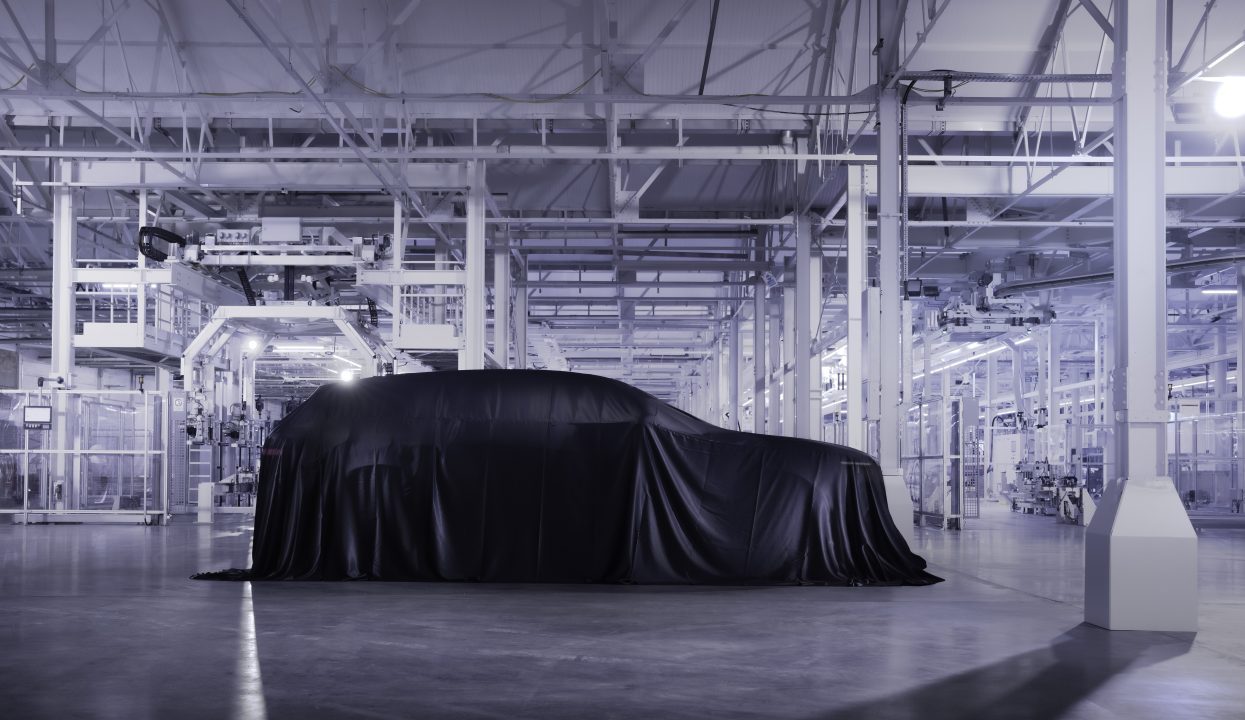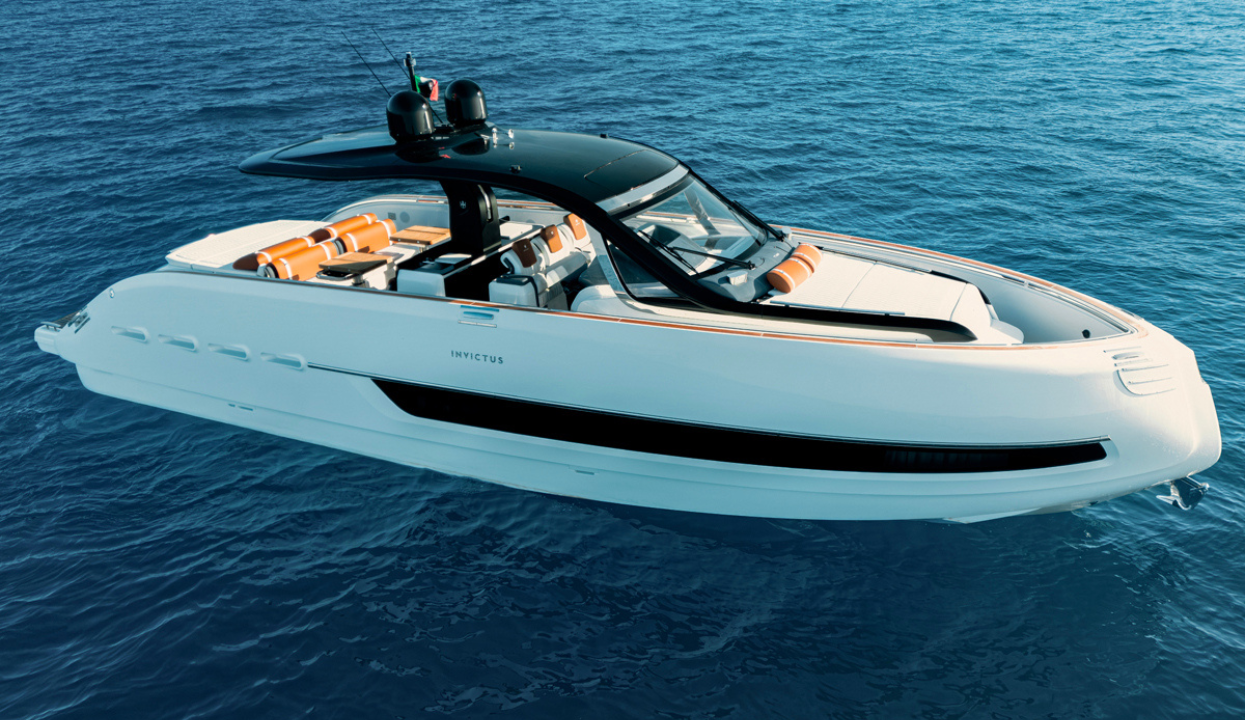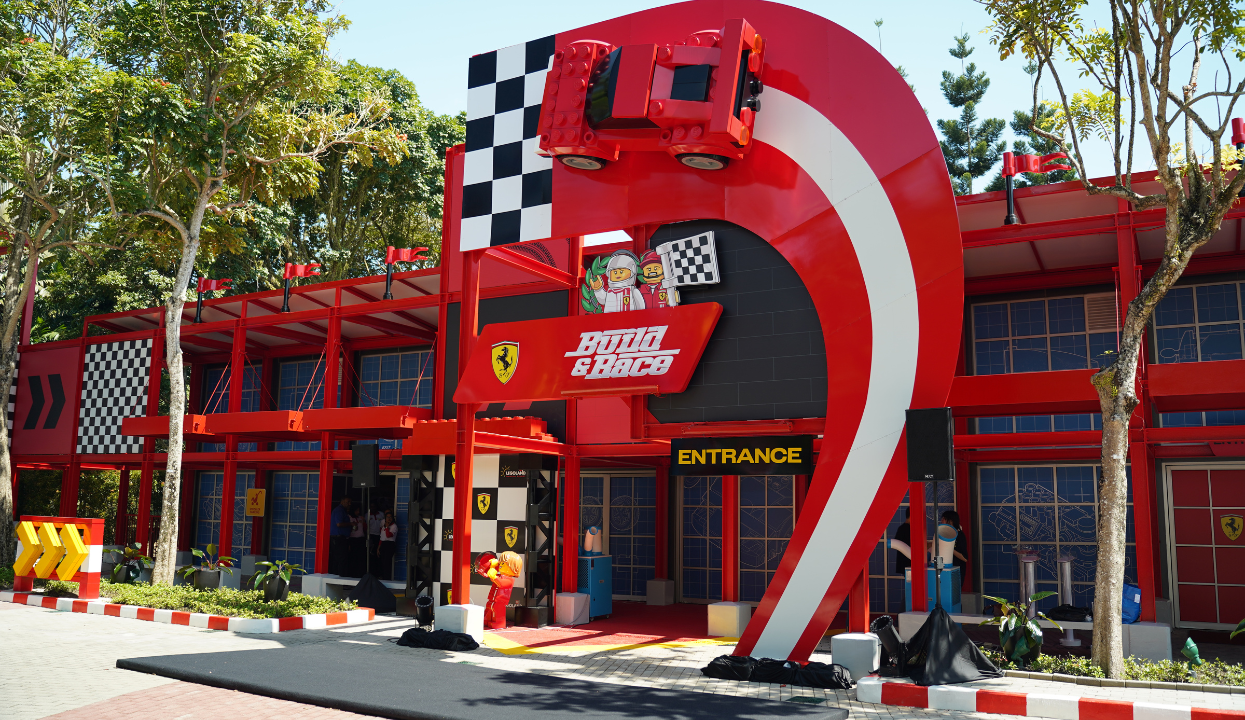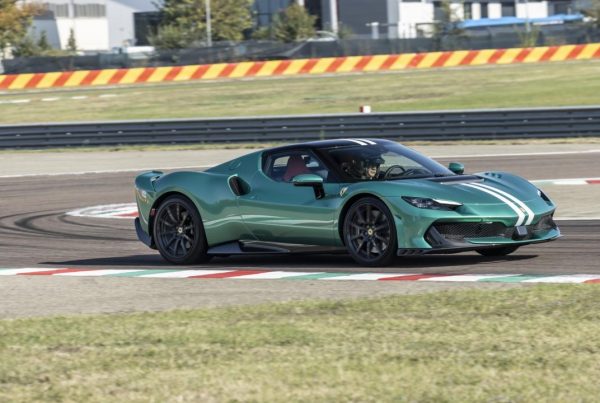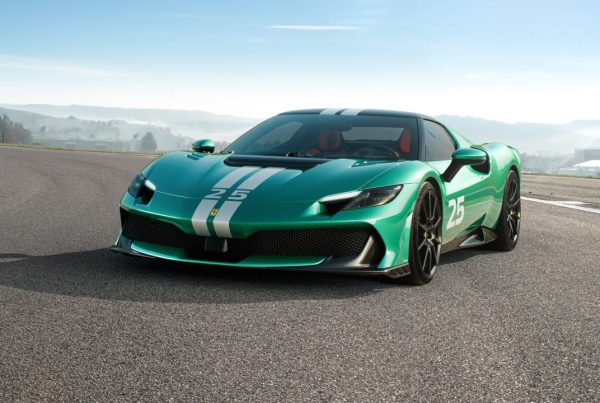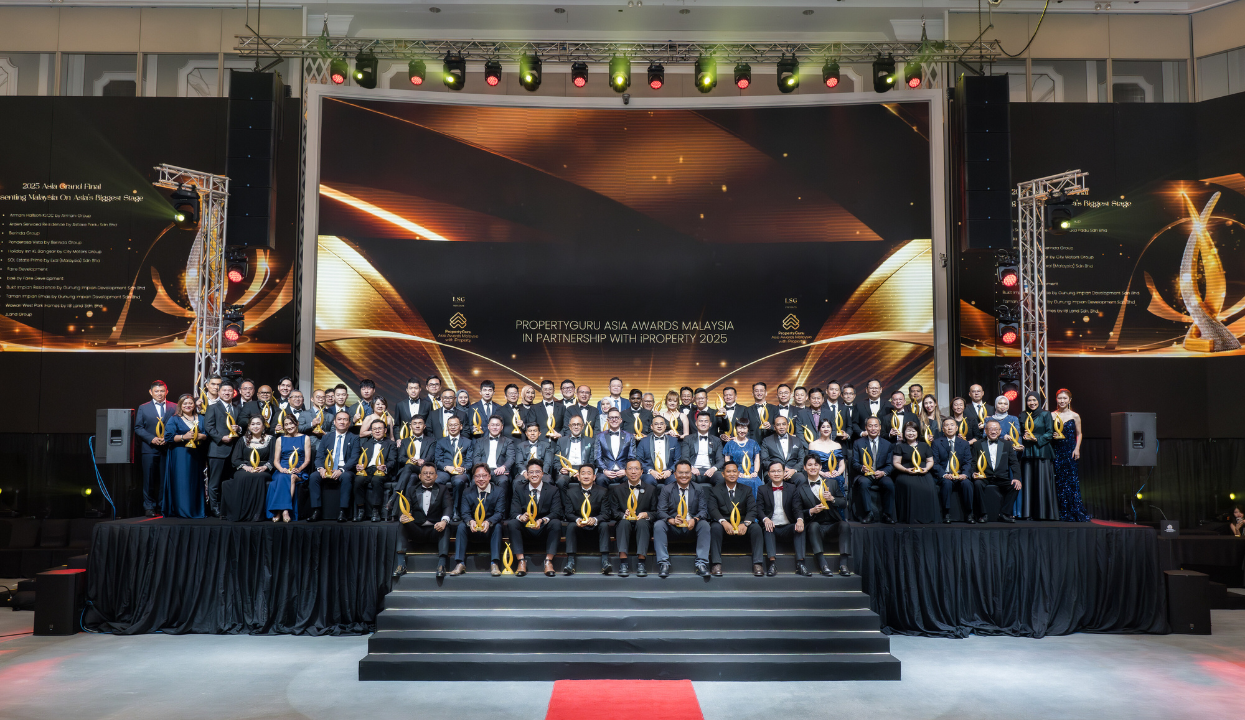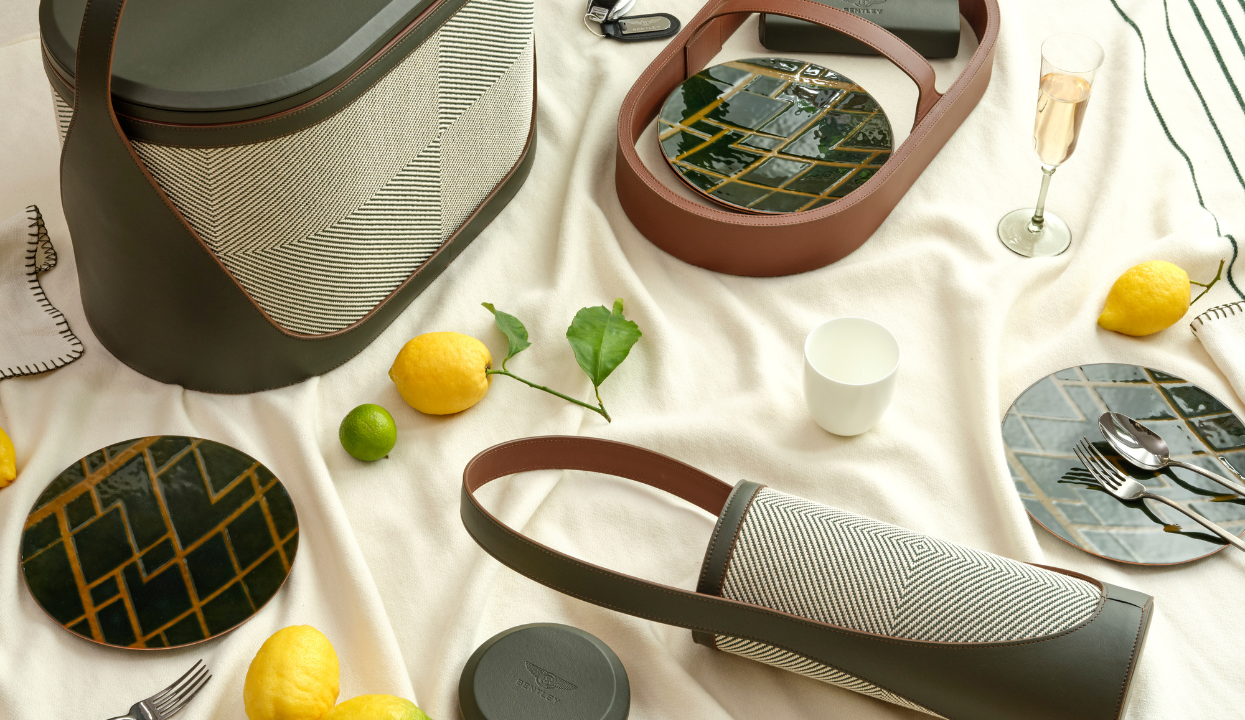Since the dawning of the supercar age, every generation has seen the birth of ever more extreme machines; with the likes of not just Ferrari, Lamborghini, McLaren & Porsche, but latterly even Bugatti and smaller volume outfits like Pagani & Koenigsegg constantly pushing the boundaries of road car performance. In more recent times however, there is a certain sense that perhaps things have been skewed too far towards on-paper performance, while beauty & an engagingly pure driving experience have increasingly taken back seats next to chasing headline numbers.

Their designs are increasingly dominated by aero functionality, rather than the effortless purity and elegance of flowing lines & ideal proportions. Powertrains are increasing in complexity with turbocharging and electrified elements, in pursuit of the ‘horsepower wars’ that have arguably reached their peak. Designed by committees rather than agile teams of passionate individuals with a clear vision, often to meet a certain budgetary target in lieu of setting an iconic standard that truly stands the test of time, their physical sizes and weights balloon ever upwards; while the interior designs and in-cockpit experiences lose tactility even as they’ve become almost too similar across each brand’s model ranges, with little in the way of individually distinct characters.

Even more significantly, the driving experience that used to make one’s heart whoop with joy in the anticipation of another exhilarating drive through a favourite winding road is now dominated by more computers and electronics than ever before; more & more it feels like the car is the one driving you, instead of the other way around. It gets challenging to pursue the art of mastering driving skills over time and perfecting them through practice, when your inputs as a driver are second-guessed by sensors & algorithms.

What if things didn’t have to be this way, however? What if the dreamy bedroom wall poster icons that once sparked many of our motoring passions, masterfully reviewed in magazines and immortalised in video games, hadn’t been allowed to die out but had evolved instead?
What would they look like today? What would they feel like with modern materials, more power, and evolved designs? Most importantly, could they still embody that analogue purity while being sharper, lighter, and more alive to drive than ever before?

These questions came to mind in 2024, when a small group of the passionately driven individuals who conceived Garagisti & Co. found themselves in St. Moritz for the acclaimed International Concours of Elegance (ICE) which ended up being cancelled due to inclement weather. As fate would have it however, this ended up being an opportune meeting of kindred spirits including Mario Escudero. Together, they discovered a shared obsession for the Lamborghini Countach for the very fact that it exemplifies many of those vital values, in a moment that sparked the birth of the Garagisti project.

This continued into a series of very real conversations over coffee in a quiet corner of Chelsea, London. Those questions didn’t die away, instead they became the ethos behind the GP1, Garagisti’s all-new, fully analogue hypercar powered by a naturally aspirated V12 and formed around a carbon fiber composite monocoque. In an age now dominated by hybrid systems, algorithms & digitalization, it truly stands apart as a purist’s dream machine that exists solely to celebrate the unfiltered joy of driving; while making the art of bespoke not just a statement, but a truly transcendental experience akin to having one’s own private atelier.

The name Garagisti itself comes from the term Enzo Ferrari used to ‘dismiss’ Britain’s rebellious privateer Formula 1 teams that shook up Grand Prix racing throughout the 1950s and 1960s; building their cars in small workshops while challenging the established order with nothing but ingenuity, courage, and the relentless desire to win. It became a badge of honour symbolizing disruptive innovation & pure racing passion.


Now, the GP1 also brings that philosophy to life as the sort of hypercar which most large, established manufacturers can’t seem to make anymore. With no algorithms to optimize, brand legacy to protect, or focus groups to please, it keeps its eye on uncompromised engineering excellence, tasteful design and an instinctively crafted feel. Just like the teams that inspired its name, success here won’t be attained alone, and in this regard Garagisti has already distanced themselves from any number of recent boutique supercar start-ups that faded away after promising great things, with an esteemed coalition of specialist technical partners all having pledged their support for the project.


Beginning as always with the GP1’s design, this celebration of form inspired by the golden ‘wedge’ design age is a clean sheet work by Angel Guerra, who previously worked on the Bugatti Mistral, Tourbillon & Rimac Nevera. While it is unmistakably its own visual thing with timelessly modern proportions and a beautifully organic flow, Angel did take inspiration from a number of maestro Marcello Gandini’s masterpieces including the Countach & Lancia Stratos Zero. This is most distinctively seen from the GP1’s front with a characteristic full-width light bar and a contrasting S-duct blending into the windscreen. There is a very real sense of Space Age futurism here as well, with the cockpit greenhouse positioned strongly in-board between voluptuously drawn front fenders.




Its lateral profile similarly recalls design elements from many of those renowned supercars sharing the classic wedge silhouette, while also showing hints of LaFerrari, Aventador and the 2017 Ford GT with its side air intakes cutting dramatically into those bold rear buttresses. Round the back, one’s eye is drawn immediately to the absolutely enormous rear diffuser with the gearbox housing beautifully displayed at its center. Largely exposed rear tyres on either side of the diffuser along with the striking high-mounted central quad exhaust just add to the GP1’s heart-racing rear character.










It is from the rarely perceived dorsal view however, that the full impact of Garagisti’s creation makes itself known. From the gorgeously sexy hourglass pinched, ‘Coke bottle’ profile that is as efficient for aerodynamics as it is visually appealing, flowing into muscularly buxom rear haunches, to the dual NACA duct air intakes inspired by aeronautic design, this is one seriously good looking piece of automotive sculpture. That long, vertical rear window is indeed the Countach LP400 ‘Periscopio’s famous rear view mirror channel adapted, redesigned and then dramatically scaled up for a whole new aesthetic.


That bold rear diffuser is also one of the first visual hints at this hypercar’s intricate underbody aerodynamic system with surgically precise airflow channeling & some of the largest venturi tunnels ever integrated into a road car; indeed they stem from underneath the cabin’s center itself. Experienced Formula 1 and Le Mans Hypercar chassis constructor DEXET Technologies is responsible for the GP1’s composite monocoque & aerodynamic development simulations, ensuring race-proven performance with high safety levels whether one is carving through mountain pass apexes or enjoying higher speeds on the Autobahn. With the underbody thus responsible for generating immense downforce claimed to top 850 kg, the rest of the GP1’s body is left free to remain cleanly elegant while remaining pleasingly undisrupted by wings, spoilers or dive planes.



They say that a proper supercar must have a V12, for there is no other engine layout in the world that quite matches its perfect balance of mechanical and firing forces, smooth precision of power delivery & deep roots of motorsport heritage. No other engine revs in such a harmonious sequence while producing a sound that thrills viscerally like mechanical music. Completely new and bespoke in nature, the GP1’s 6.6-litre naturally aspirated V12 will be developed by Italtecnica Srl, the renowned Italian motorsport & powertrain specialist whose impressive track record includes some of the world’s most incredible sounding V12s, including those which powered the Ferrari 550 GTC and championship-winning Maserati MC12 GT1.
With gear-driven dual overhead camshafts for ultimate precision & reliability, individual throttle bodies, 4 valves per cylinder and dry sump lubrication, Garagisti’s 65-degree big 12 will produce 800 hp or more near its gloriously howling, spine tingling 9,000 RPM redline. Along with over 700 Nm of torque, this should be more than enough for seriously thrilling performance levels, given that the GP1 is targeted to weigh in at just 1,000 kg dry. To be crafted with the same obsession for lightness, balance and response that once defined soulful driving’s golden age, this will be a V12 designed not only to perform, but to delight listeners with a purely unfiltered, unequaled mechanical soundtrack reminiscent of the all-time greatest racing engines.

Matching this with high levels of tactile driver engagement, its power will be sent to the rear wheels via a longitudinally mounted 6-speed manual gearbox by transmission specialist Xtrac. Meanwhile, Öhlins suspension and Brembo brakes are just some of the elite motorsport-grade componentry ensuring that the GP1 will have the dynamics capabilities to match its impressive straight line thrust.
In a direct counterpoint to many of today’s touchscreen & haptic control dominated interiors, the GP1’s cockpit is sculpted entirely for pure driving focus, while remaining utterly, refreshingly free of unnecessary distractions. Distinctly bordering the twin-cockpit layout into dedicated driver and passenger areas, seamlessly integrated ventilation outlets eliminate ducts or excessive clutter. The steering wheel is a true work of control art: perfectly sculpted for the ideal ‘hands at 3 & 9 o’clock’ positioning, mounted on beautifully slim twin spokes, and seemingly executed without any unneeded buttons or controls. An ideally sloped center console immediately brings that of the Porsche 980 Carrera GT to mind, while positioning the manual gear shifter optimally close at hand.

In the spirit of those truly revered ‘80s, ‘90s & 2000s supercar icons which inspired it, the GP1 will be built not just as a racetrack beast, but to be a truly usable road car and GT tourer as well, with usable luggage space & optimal levels of cabin comfort. ‘Just you, the machine, and the road ahead’, was the design brief given to Angel Guerra, and it’s probably safe to say that he has nailed it spot on.
Just 25 Garagisti & Co. GP1s will ever be made for the road, each one exclusively hand-finished to its owner’s exacting specification via a bespoke commissioning programme based in the UK. The price of all this motoring excellence for those select few able to appreciate it certainly won’t come cheap at £2.45 million plus local taxes, yet it reflects the passionately driven, no-expense-spared and zero compromise philosophy with which this supercar has been crafted entirely from the ground up.

Garagisti’s Open Doors programme will grant the first 12 commissioners unprecedented access through intimate gatherings across the UK & Europe with the engineers, designers, and visionaries shaping the GP1 to be a genuinely unique supercar with all the bravery, craftsmanship & conviction they can muster. Quite unlike buying a supercar from the established manufacturers, this will give them the rare opportunity to witness, learn from and influence a hypercar’s right genesis from the heart of the brand itself.
Mario Escudero, co-founder of Garagisti & Co. concluded, “Our vision for Garagisti was born from a simple question. What if the golden age of analogue supercars never ended? What if icons like the Countach Evoluzione had sparked a lineage rather than a dead-end? What would the great cars of the ‘80s, ‘90s and early 2000s look like today if they’d evolved with new technology but kept their analogue soul. We brought together some of the best minds in the world and answered that question with our hands, our hearts, and our passion. The GP1 is our answer.”

With these design renderings now revealed for all to admire, the GP1 will now enter the requisite advanced stages of engineering & production. Driven by passion, precision & a relentless pursuit of excellence, this will in fact be a machine that directly contradicts many of today’s designs-by-committee in its efforts to redirect the focus into true automotive excellence. Moving, sounding, but most importantly looking exactly like a supercar should, hopefully it will inspire more manufacturers to make a return to when speed came with soul, and purposeful function with emotive beauty.



